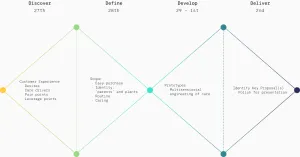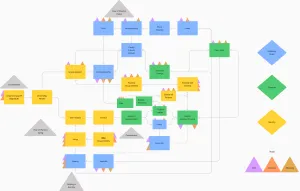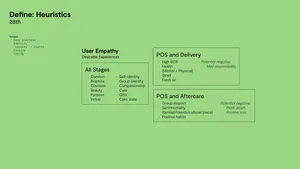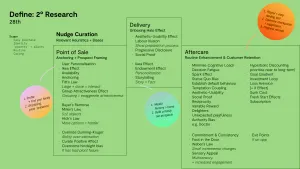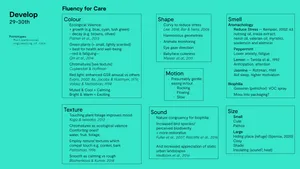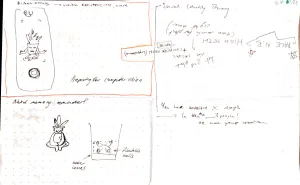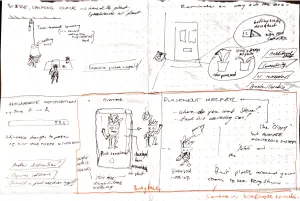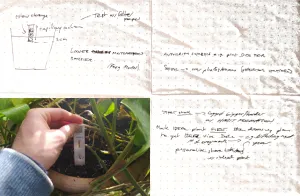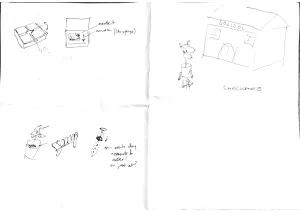DRAFT CONTENT 🚧
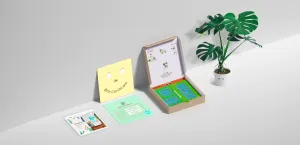
The brief speculated that Patch Plants retains customers well when they buy easy-care plants, but has low loyalty from customers who purchase plants that are harder to look after.
Using multiple touchpoints to develop and enhance the customer journey in a holistic way.
Several key targets were identified:
- Guide new plant owners towards low-maintenance plants.
- Foster a sense of ownership and a caring bond between customers and their plants.
- Encourage the development of lasting plant-care routines.
A cognitive and behavioural science lens was used throughout the process, applying insights to enhance users' flow and experience.
How can we help customers develop healthy plant-caring habits and build a lasting relationship with their plants?
🔍
Builds a sense of relaxation and happiness through calming, biophilic imagery and copy.
- Emphasise the easiness and joy of looking after plants.
Labels plants as ‘family’ whilst using family and child-based imagery.
- Use our nurturing instinct to build a connection to the plants.
Uses gestures and eye gaze to direct attention and dynamic imagery to capture it.
- Streamline user flow towards the right product for them.
Personalises recommendations via a ‘Plant Adoption Expert’ chatbot.
- Use this 'adoption expert' to develop users' caring identity.
- Channel customers to personalised recommendations and avoid overloading them with too many choices.
🔍
A plant birth certificate is personalised with the owner's name.
- Enhance owners' sense of ownership, identity as a carer for and sense of a relationship with the plant.
A candle is provided to celebrate the plant's birthday.
- Use candles' inherent connection to delight to enhance customer satisfaction.
- Set up a future goal to reach a certain milestone in the plant's life and therefore support habit formation.
The care and effort given to the plant before delivery is highlighted inside the box.
- Use operational transparency to emphasise Patch's hard work and the value of the plant, and therefore enhance satisfaction.
🔍
Contains a poppable, bubble wrap watering calendar.
- Establish watering as a social norm and the ‘default’ behaviour.
- Use the delight and temptation of popping a bubble to encourage the behaviour.
-
Create a motivational 'goal gradient', with
90 bubbles/waterings a solid rule-of-thumb to ensure a
habit is formed.
Prompts customers to relight the candle after the 90th watering.
- Enhance the motivational effect through this ritual and its delightful connotations.
- Build towards and provide a sense of achievement for establishing a watering habit.
-
Once again hint towards a human-like relationship with
the plant.
Uses pastel colours for the medkit and birth certificate.
- Develop associations with care.
Uses energetic, bright colours for the watering calendar.
- Encourage joy and action.
🔍
A ‘Plant Doctor’ diagnoses plant issues and provides care recommendations.
- Use the authority of a 'doctor' to connect to the need for care and emphasise the significance of its recommendations.
- Minimise uncertainty about the right course of action if a plant is unwell, by clearly directing specific behaviours.
- Make sure that the risks of plant death are mitigated, and provide a chance for customers to replace the plant and continue their relationship with Patch Plants even in the tragic event of a plant's untimely death.
n.b. A future version could provide real-time feedback using computer vision, but an easier, immediate integration could provide suggestions for probable issues and connect to customer service for further support.
Continues the animation and characterisation of the plant over their lifetime.
- Once again take advantage of the power of the plant's ‘cuteness’ to appeal to our nurture instincts.
- Help to ensure the connection with the plant's anthropomorphised character isn't lost over time.
Builds a sense of relaxation and happiness through calming, biophilic imagery and copy.
- Emphasise the easiness and joy of looking after plants.
Labels plants as ‘family’ whilst using family and child-based imagery.
- Use our nurturing instinct to build a connection to the plants.
Uses gestures and eye gaze to direct attention and dynamic imagery to capture it.
- Streamline user flow towards the right product for them.
Personalises recommendations via a ‘Plant Adoption Expert’ chatbot.
- Use this 'adoption expert' to develop users' caring identity.
- Channel customers to personalised recommendations and avoid overloading them with too many choices.
Lets users visualise and place plants in their own rooms.
- Build a sense of 'endowment' and ownership pre-purchase.
Animates the plants to build a sense of 'cuteness'.
- Build customers' connection to plants through the nurturing instinct.
Recommends companion plants.
- Prime further purchases.
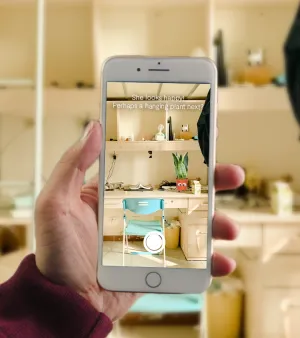
Uses medical imagery.
-
Firmly establish a caring identity and
relationship with the plants.
Further anthropomorphises the plant through the style and copy.
- Rekindle and enhance the connection to our nurture instinct post-purchase.
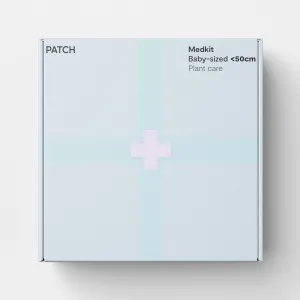
A plant birth certificate is personalised with the owner's name.
- Enhance owners' sense of ownership, identity as a carer for and sense of a relationship with the plant.
A candle is provided to celebrate the plant's birthday.
- Use candles' inherent connection to delight to enhance customer satisfaction.
- Set up a future goal to reach a certain milestone in the plant's life and therefore support habit formation.
The care and effort given to the plant before delivery is highlighted inside the box.
- Use operational transparency to emphasise Patch's hard work and the value of the plant, and therefore enhance satisfaction.
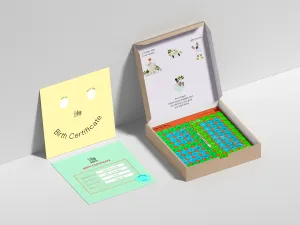
Contains a poppable, bubble wrap watering calendar.
- Establish watering as a social norm and the ‘default’ behaviour.
- Use the delight and temptation of popping a bubble to encourage the behaviour.
-
Create a motivational 'goal gradient',
with 90 bubbles/waterings a solid rule-of-thumb
to ensure a habit is formed.
Prompts customers to relight the candle after the 90th watering.
- Enhance the motivational effect through this ritual and its delightful connotations.
- Build towards and provide a sense of achievement for establishing a watering habit.
-
Once again hint towards a human-like
relationship with the plant.
Uses pastel colours for the medkit and birth certificate.
- Develop associations with care.
Uses energetic, bright colours for the watering calendar.
- Encourage joy and action.
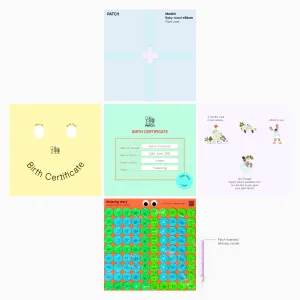
A ‘Plant Doctor’ diagnoses plant issues and provides care recommendations.
- Use the authority of a 'doctor' to connect to the need for care and emphasise the significance of its recommendations.
- Minimise uncertainty about the right course of action if a plant is unwell, by clearly directing specific behaviours.
- Make sure that the risks of plant death are mitigated, and provide a chance for customers to replace the plant and continue their relationship with Patch Plants even in the tragic event of a plant's untimely death.
n.b. A future version could provide real-time feedback using computer vision, but an easier, immediate integration could provide suggestions for probable issues and connect to customer service for further support.
Continues the animation and characterisation of the plant over their lifetime.
- Once again take advantage of the power of the plant's ‘cuteness’ to appeal to our nurture instincts.
- Help to ensure the connection with the plant's anthropomorphised character isn't lost over time.
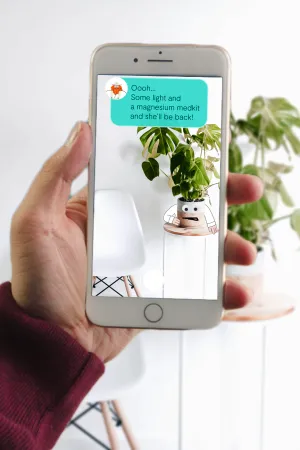
I used the design 'double diamond', which
outlines four stages of divergent and then convergent
thinking: Discovery, Definition, Development and
Delivery.
This allowed me to outline, plan and guardrail the project; keeping to task to deliver the project within the 5-day deadline.
I used a cybernetics map to empathise with and sketch a generalised overview of users' psychology — tracing their relationship with plants over time. This helped to pinpoint potential pain points that need mitigation or balancing, as well as to identify triggers for positive behaviours. It also highlighted possible customer gains that could be reinforced and amplified to enhance the overall experience.
I chose this generalised overview as a way to understand customer experience over time, based on not being able to undertake in-depth user research in the time frame. This helped to avoid over-specifying particular customer 'journeys' which can sometimes be overly linear, simplified and therefore unrepresentative of genuine experiences.
From this holistic perspective, the point of sale, delivery and aftercare emerged as three key points to leverage in the customer journey. I felt it crucial to develop a sense of continuity through interventions at these stages, in order to reinforce particular thoughts and feelings at intervals over the customer experience. Therefore, the interventions could foster a genuine carer identity among customers and foster sustained behaviours, with each experience building off and supporting each other.
This approach intended to avoid the loss of potential leverage and impact that can result from disjointed experiences, as a result of focusing too heavily on eliciting one-off actions at individual touchpoints.
I used desk research to uncover relevant cognitive and behavioural insights that could help drive positive customer perceptions and behaviours.
This included a review of relevant evidence to building a sense of care from empirical aesthetics and psychophysics, as well as an audit of relevant cognitive and behavioural biases and heuristics for each touchpoint.
I sketched out various concepts to explore, test and refine different design avenues.
From this ideation and testing process, I decided to focus on four key concepts across the customer journey.
-
Point of Sale: Landing Page
A personalised, simplified and perceptually-optimised online shopping experience.
-
Point of Sale: Plant Placement Pal
An AR tool which lets customers visualise plants in their own place. This helps them make better purchase decisions whilst developing a sense of ownership before purchase, as well as anthropomorphising the plant to encourage a joyful relationship to them.
-
Delivery: Medkit
Designed to further anthropomorphise the plant and take advantage of typical and/or probable psychological cues for care, love and joy.
-
Aftercare: Plant Doctor
An AR tool which uses computer vision to identify specific plant health issues, giving customers direct treatment instructions for the anthroporphised plant, in order to help them further relate to the plant whilst improving their care.
This rapid sprint demonstrates the power of incorporating cognitive and behavioural science in the design process.
Interfacing scientific insights with a more typical, intuitive design approach allows a very rapid design process that is still evidence-informed. This is particularly significant where access to customers and context-specific data is lacking.
These insights not only help to identify behavioural drivers, leverage points and mechanisms, but also provide a firm sense of direction to the sensory design choices (here focussed on vision) and help empathise with customers to deliver a meaningful experience.

Psychological insights are extremely useful and productive tools to guide both strategic and stylistic design choices.
A range of delightful concepts emerged in just 5 days. Together, they formed a holistic, multi-touchpoint strategy to:
- Make the customer experience easier and more fluent, as well as personalised and motivating.
- Develop customers' identity as a plant owner and carer.
- Encourage the formation of a sustained, plant-caring habit.
This sprint provides a strong, evidence-based starting point to improve customer retention and loyalty for Patch Plants; producing a range of concepts which are ready to be tested, refined and improved through user and context-specific feedback and iteration.
With thanks to Raphy March for the great brief.
